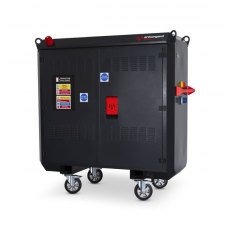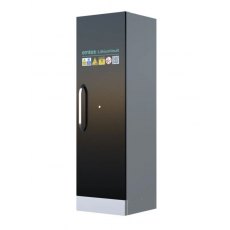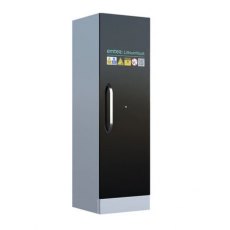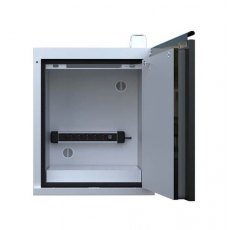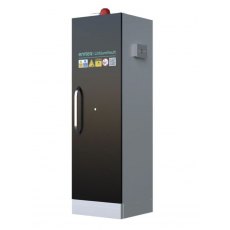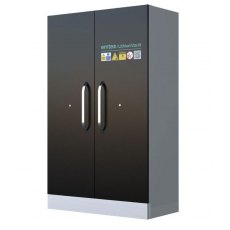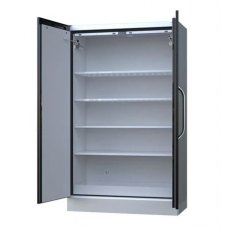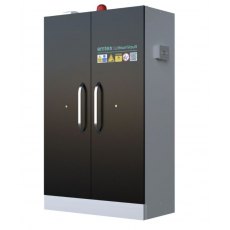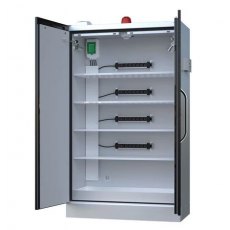Lithium-Ion Battery Storage: A Comprehensive Guide

In recent years, lithium-ion battery storage has emerged as a game-changing technology in the field of energy storage. With its high energy density, long life span, and fast charging capabilities, lithium-ion batteries have become increasingly popular for a wide range of applications.
Lithium-Ion batteries are a type of rechargeable battery that use lithium ions to store and release electrical energy. They consist of 2 electrodes (a positive cathode and a negative anode) separated by an electrolyte, which allows the movement of lithium ions between the electrodes during charging and discharging cycles. They can be found in various industries and devices due to their favourable characteristics. Some applications Lithium-Ion batteries are used are:
- Portable electronics - smartphones, laptops, tablets, digital cameras, battery powered tools etc
- Electric Vehicles (EVs) - the primary power source for electric vehicles.
- Renewable Energy Storage
- Grid-level Energy Storage
In this guide, we will explore the volatility of lithium-ion batteries, importance of correct storage, the dos and don'ts of lithium-ion battery storage, discuss what to look out for when using these batteries, and recommended products.
Lithium-ion batteries can enter a volatile state if not handled or stored properly. This volatile state refers to situations where the battery can become unstable and potentially dangerous. Understanding the factors that contribute to this volatility and implementing correct storage practices is crucial for safety.
Thermal Runaway
One of the primary reasons for the volatile state of lithium-ion batteries is a phenomenon called thermal runaway. This occurs when the battery's internal temperature rises uncontrollably, leading to a self-sustaining increase in temperature and energy release. This can result in a fire or explosion.
Causes of Thermal Runaway
There are several factors that can trigger thermal runaway in lithium-ion batteries:
- Overcharging: Charging a lithium-ion battery beyond its recommended voltage or for an extended duration can cause excessive heat build-up and lead to thermal runaway.
- Overheating: Exposures to high temperatures, such as direct sunlight or heat sources, can cause the battery to heat up and potentially enter a volatile state.
- Physical Damage: Physical damage to the battery, such as punctures or dents, can disrupt the internal structure and increase the risk of thermal runaway.
- Manufacturing Defects: Rare manufacturing defects like internal short circuits or impurities in the battery material can also lead to thermal runaway.
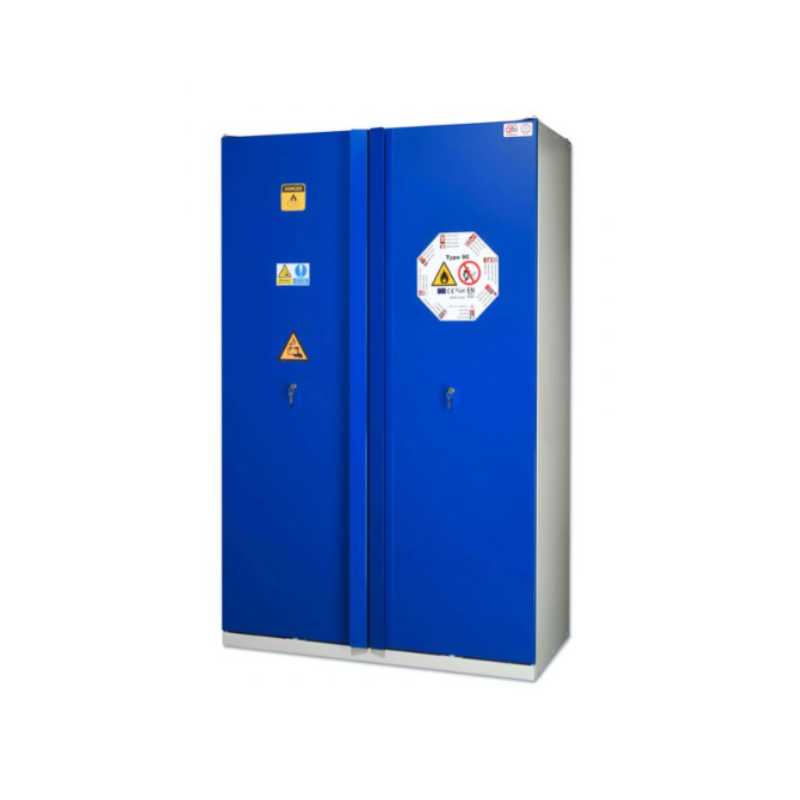
Battery Storage
CabinetsImportance of Correct Storage
Proper storage of lithium-ion batteries is essential to minimise the risk of thermal runaway and ensure their safe use. Below are some Do's and Don'ts on how to properly store your lithium-ions batteries.
Do's
Proper Charging
Follow the manufacturer's guidelines for charging your lithium-ion batteries. Overcharging or undercharging can adversely affect the battery's performance and lifespan. Use a compatible charger and avoid using fast chargers excessively, as they generate more heat and can degrade the battery faster. If you are storing lithium-ion batteries for an extended period, ensure they are at a moderate charge level, typically around 40-60%. Storing batteries at full charge or complete discharge for a long time can lead to performance degradation and increase the risk of thermal runaway. Some batteries have a builti n 'storage mode' that helps maintain an optimal charge level during storage.
Storage Conditions
Store your lithium-ion batteries in a cool, dry environment helps prevent excessive heat buildup. Avoid exposing them to direct sunlight, extreme temperatures, or high humidity, as both high heat and freezing temperatures can accelerate the degradation of the battery and increase the risk of thermal runaway. Ideally, aim for storage temperatures between 20°C and 25°C (68°F and 77°F) for optimal performance.
Regular Use
Lithium-ion batteries perform best when they are regularly used. If you have spare batteries, rotate their usage to prevent any single battery form sitting idle for extended periods. It is recommended to use lithium-ion batteries at least once every few weeks to maintain their capacity.
Safety Measures
Handle lithium-ion batteries with care and follow proper safety precautions. Proper storage can protect batteries from physical damage. Avoid exposing them to physical damage, punctures, or swollen, discontinue its use immediately and dispose of it properly according to local regulations. If storing the batteries, make sure they are stored in a secure location where they are less likely to be dropped, crushed, or punctured. Avoid storing batteries with sharp objects or materials that can cause damage.
Isolating Batteries
Store lithium-ion batteries individually or in a non-conductive container. this prevents contact between batteries and other metal objects, reducing the risk of short circuits and accidental discharge.
Don'ts
Overcharging
Avoid fully discharging lithium-ion batteries whenever possible. Deep Discharges can harm the battery's overall capacity and shorten its lifespan. It is advisable to recharge the battery once it reaches around 20% to 30% capacity to maintain its health.
Extreme Temperatures
Operating lithium-ion batteries in extremely hot or cold environments can cause irreversible damage. Avoid exposing them to direct sunlight, heaters, or any other sources of excessive heat. Similarly, do not use them in freezing conditions unless specifically designed for such environments.
Mixing Battery Types
Do not mix different types or brands of lithium-ion batteries in the same device. Each battery has its own specifications and characteristics and mixing them can lead to imbalanced charging and potential safety hazards.
By following correct storage practices, you can minimise the chances of thermal runaway and ensure the safe and reliable use of lithium-ion batteries. It is also important to stay updated on safety recommendations and guidelines provided by battery manufacturers and regulatory authorities to ensure proper handling and storage.
(£2,640.00 inc VAT)
(£6,488.40 inc VAT)
(£7,686.00 inc VAT)
Safest Way to Discard Lithium-Ion Batteries
When lithium-ion batteries reach the end of their useful life or become damaged, it is important to discard them safely to minimise environmental and safety risks. here are some recommended steps for proper disposal:
- Check Local Regulations - Before disposing of lithium-ion batteries, check your local regulations or guidelines for proper disposal methods. Different regions have specific rules and recycling programs in place to handle battery waste.
- Fully Discharge the Battery: Safely discharge the batter by using it in a device until it no longer powers the device. this step reduces the risk of a short circuit during the disposal process.
- Protect Terminals: To Prevent short circuits, cover the battery terminals with non-conductive tape or place each battery in a separate plastic bag. this step helps avoid accidental contact and potential discharge.
- Recycling: Lithium-ion batteries should be recycled rather than thrown in the regular trash. Many recycling centres and electronic stores accept lithium-ion batteries for proper recycling. Contact local recycling facilities or check with battery manufacturers for drop-off locations.
By following these steps and adhering to local regulations you can ensure the safe disposal of lithium-ion batteries and contribute to environmental sustainability.
Read More From Fuel Tank Shop
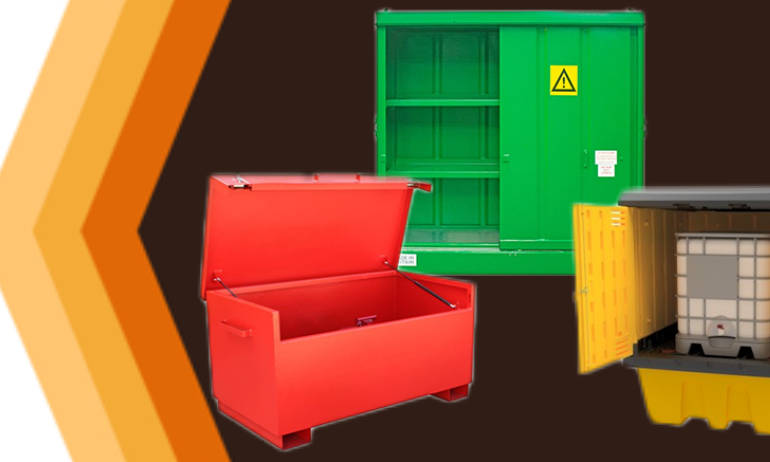
What Does COSHH Stand for
What Does COSHH Stand for.png)
BackUp Power Storage Solutions
Back Up Power Storage Solutions

 Login
Login
